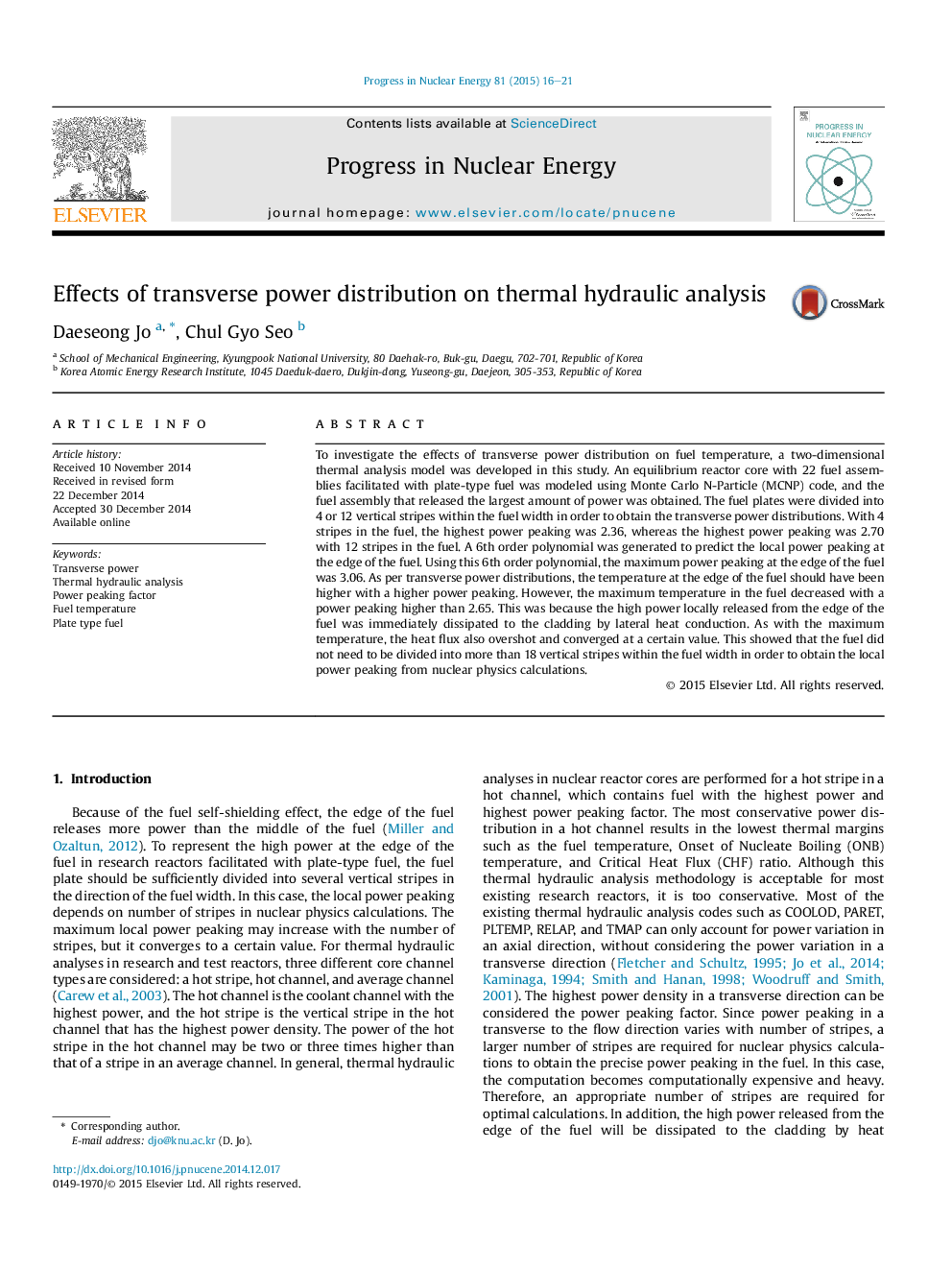| Article ID | Journal | Published Year | Pages | File Type |
|---|---|---|---|---|
| 8085380 | Progress in Nuclear Energy | 2015 | 6 Pages |
Abstract
To investigate the effects of transverse power distribution on fuel temperature, a two-dimensional thermal analysis model was developed in this study. An equilibrium reactor core with 22 fuel assemblies facilitated with plate-type fuel was modeled using Monte Carlo N-Particle (MCNP) code, and the fuel assembly that released the largest amount of power was obtained. The fuel plates were divided into 4 or 12 vertical stripes within the fuel width in order to obtain the transverse power distributions. With 4 stripes in the fuel, the highest power peaking was 2.36, whereas the highest power peaking was 2.70 with 12 stripes in the fuel. A 6th order polynomial was generated to predict the local power peaking at the edge of the fuel. Using this 6th order polynomial, the maximum power peaking at the edge of the fuel was 3.06. As per transverse power distributions, the temperature at the edge of the fuel should have been higher with a higher power peaking. However, the maximum temperature in the fuel decreased with a power peaking higher than 2.65. This was because the high power locally released from the edge of the fuel was immediately dissipated to the cladding by lateral heat conduction. As with the maximum temperature, the heat flux also overshot and converged at a certain value. This showed that the fuel did not need to be divided into more than 18 vertical stripes within the fuel width in order to obtain the local power peaking from nuclear physics calculations.
Related Topics
Physical Sciences and Engineering
Energy
Energy Engineering and Power Technology
Authors
Daeseong Jo, Chul Gyo Seo,
